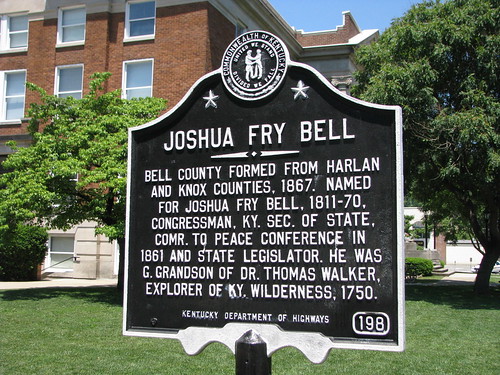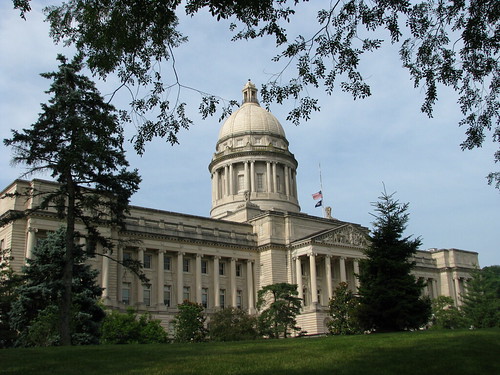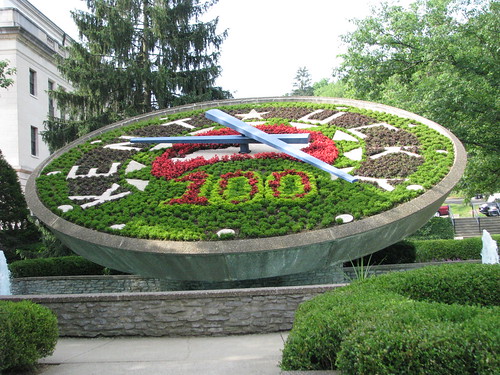 |
| Joshua Fry Bell historic marker #198, Pineville, Ky. |
Joshua Fry Bell, for whom Bell County is named, was born in Danville and is a 1828 Centre College alum. Bell, a lawyer, was elected to the U.S. House as a Whig. Seeking to return to Kentucky, he served a short time as secretary of state under Governor Crittenden. But history tells us that the Whig Party disappeared. Before the rise of the Republican Party, however, Bell (and others) identified with the Opposition Party. It was under this banner that Bell ran for governor, losing to Beriah Magoffin.
Bell served alongside fellow Kentuckians William Butler and John Crittenden at the Peace Conference of 1861, a last-ditch effort to avoid Civil War.
From 1863 to 1867, Bell served in the Kentucky House of Representatives. During this time, the county bearing Bell’s name was formed. In fact, the county’s official name was “Josh Bell County” until 1873.










